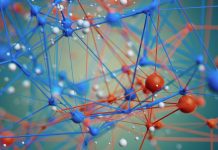A team based in the University of Cambridge and University College London published a research study to create understanding about development in the adolescent mind
According to new research published in the Proceedings of the National Academy of Sciences (PNAS), new brain networks come into action in the teenage brain, leading to complex social skills and heightened risk of mental illness.
What is it that happens in the human mind when a teenager becomes an adult? Why does this transition open up the risk of mental illnesses like depression, eating disorders or borderline personality disorder?
Adolescence is a much-feared, documented and transformative time in an individual’s life. These years are associated with the earning of new skills -socially, mentally- but also the beginning of an increased risk of mental illness. It has been commonly established that these mental changes must reflect developmental changes in the brain, but the exact changes and transition was previously unknown.
How did these researchers get their brain data?
In this study, functional magnetic resonance imaging (fMRI) data on brain activity was taken from 298 healthy young people. These 14 to 25-year-old participants were scanned 6-12 months apart, one to three times.
The participants had to quietly lie in the scanner, enabling researchers to analyse the pattern of connections between different brain regions while the brain was in a resting state.
Measuring functional connectivity in the brain presents particular challenges, as Dr František Váša, who led the study as a Gates Cambridge Trust PhD Scholar, now at King’s College London, explained:
“Studying brain functional connectivity with fMRI is tricky as even the slightest head movement can corrupt the data – this is especially problematic when studying adolescent development as younger people find it harder to keep still during the scan.
“Here, we used three different approaches for removing signatures of head movement from the data, and obtained consistent results, which made us confident that our conclusions are not related to head movement, but to developmental changes in the adolescent brain.”
Researchers discovered that the way that different regions of the brain ‘talk’ to one another actually changes during adolescence – also known as the functional connectivity of the human brain.
What two changes in the brain happen during adolescence?
The study uses an economic metaphor to help us visualise these complex changes in brain activity.
1. Conservative change (‘the rich get richer’)
The regions that are responsible for vision, movement, and other basic faculties were found to be strongly connected at the age of 14. These connections in the motor cortisol areas doubled down on their strength, becoming even stronger by the age of 25 if they were already strong. The team basically established that there is a level of certainty to brain development patterns when it concerns these specific regions.
2. Disruptive change (‘the rich get poorer, and the poor get richer’)
Some of the most valued behavioural skills, including ‘theory of mind’ (being able to imagine how someone is feeling or what they are thinking) have a different change through adolescence. Here, connections that were initially weak became stronger and the initially strong became weaker. The network of regions that showed the disruptive pattern of change during adolescence had high levels of metabolic activity typically associated with active re-modelling of connections between nerve cells.
Dr Petra Vértes, joint senior author of the paper and a Fellow of the mental health research charity MQ, said:
“From the results of these brain scans, it appears that the acquisition of new, more adult skills during adolescence depends on the active, disruptive formation of new connections between brain regions, bringing new brain networks ‘online’ for the first time to deliver advanced social and other skills as people grow older.”
Professor Ed Bullmore, joint senior author of the paper and head of the Department of Psychiatry at Cambridge, said:
“We know that depression, anxiety and other mental health disorders often occur for the first time in adolescence – but we don’t know why. These results show us that active re-modelling of brain networks is ongoing during the teenage years and deeper understanding of brain development could lead to deeper understanding of the causes of mental illness in young people.”
The study was supported by the Wellcome Trust.
Reference
Váša, F et al. Conservative and disruptive modes of adolescent change in human brain functional connectivity. PNAS; 28 Jan 2020; DOI: 10.1073/pnas.1906144117











